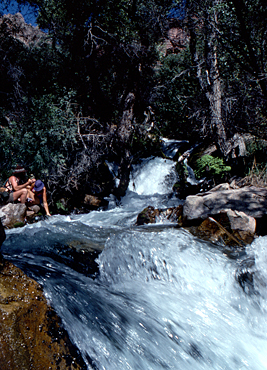 I know what you are thinking: “Oh, come on! What a chestnut! I’ve heard this like a thousand times and I know what you mean already.” You would be right. And you would be dead wrong. You know it from the perspective of someone who hasn’t bet the farm on their ability to read water. I have.
I know what you are thinking: “Oh, come on! What a chestnut! I’ve heard this like a thousand times and I know what you mean already.” You would be right. And you would be dead wrong. You know it from the perspective of someone who hasn’t bet the farm on their ability to read water. I have.
There is a difference between knowing something intellectually and knowing it in your bones. Knowing it because your life depends upon it. Rivers are masses of water responding to gravity and obstacles. Gravity is relatively constant, but the obstacles are far from constant, as is the volume of the flow. These differences have an infinite number of combinations in any one riverbed and at any one time.
I can remember the first time I felt like I could finally “read water”. Reading water is about seeing where flowing water is going, how fast, and over and around which obstructions. It’s about not just looking, but seeing. It takes perceiving small details on the surface of the water to understand what is happening beneath. Doing it well takes time, experience, skill, and perception. After I first learned to read water I couldn’t sit beside the smallest trickling stream without thinking how I would run it in a tiny boat. For a while, it ruined my chances of sitting beside a stream and daydreaming (like next to Thunder River pictured here).
One year the Tuolumne River brought home to me how obstacles themselves can change. It was our first trip of the season for commercial guides with O.A.R.S., and it was just us guides. We were there to check it out and see what the winter had wrought — and we were right to do so. The very first rapid is Rock Garden, and a rock toward the end ripped a hole in first one, then two, then three boats. A guide by the last name of Boyle thought he knew exactly where the offending rock was and took a fourth boat down, working to miss it. He ripped that one too, and from that point forward was known as “Boatripper Boyle”. We had to pull off the river, which meant carrying all of our gear up a scree slope to the road. Later, someone returned with a sledgehammer and smashed the sharp edge off the boulder.
Organizations are a lot like rivers. They are constantly changing: people ebb and flow, and the environment in which it exists creates new obstacles or changes old ones. A safe route in the past may hold new dangers, and vice versa. Knowing this can arm you against making the mistake of thinking that the way things were are the way they will always be. They really never are.

